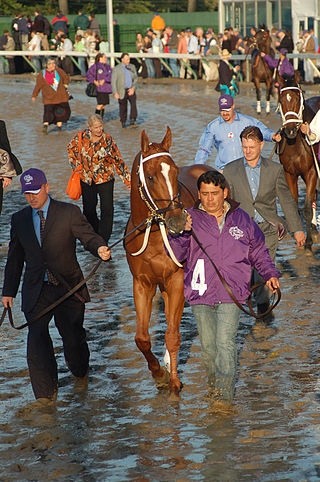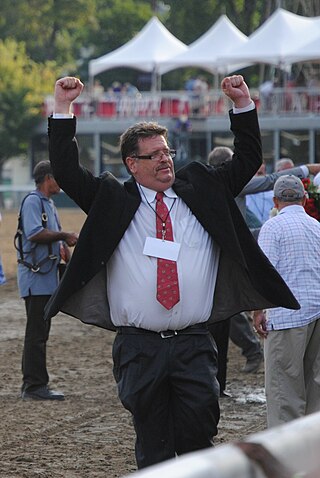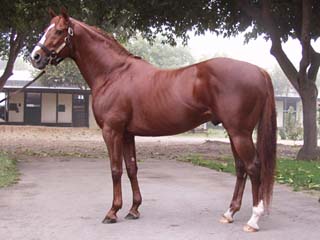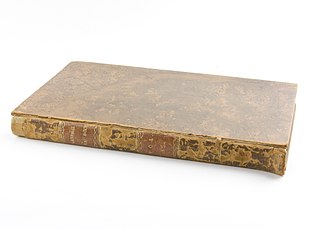Related Research Articles

Thoroughbred horse racing is a spectator sport in Australia, and gambling on horse races is a very popular pastime with A$14.3 billion wagered in 2009/10 with bookmakers and the Totalisator Agency Board (TAB). The two forms of Thoroughbred horseracing in Australia are flat racing, and races over fences or hurdles in Victoria and South Australia. Thoroughbred racing is the third most attended spectator sport in Australia, behind Australian rules football and rugby league, with almost two million admissions to 360 registered racecourses throughout Australia in 2009/10. Horseracing commenced soon after European settlement, and is now well-appointed with automatic totalizators, starting gates and photo finish cameras on nearly all Australian racecourses.

The Breeders' Cup World Championships is an annual series of Grade I Thoroughbred horse races, operated by Breeders' Cup Limited, a company formed in 1982. From its inception in 1984 through 2006, it was a single-day event; starting in 2007, it expanded to two days. All sites have been in the United States, except in 1996, when the races were at the Woodbine Racetrack in Canada.
The Blood-Horse is a news magazine that originated in 1916 as a monthly bulletin of the Thoroughbred Horse Association. The corresponding online website publication is Bloodhorse.com. In 1935 the publication was purchased by the American Thoroughbred Breeders Association. From 1961 to 2015, it was owned by the Thoroughbred Owners and Breeders Association (TOBA), a non-profit organization that promotes Thoroughbred racing, breeding, and ownership. The publication was issued by a subsidiary called Blood-Horse Publications from 2000 to 2015. In February 2015, the Jockey Club purchased a majority share in the publication. Long published as a weekly newsletter, the magazine became a monthly publication in April 2021, and the magazine and website are now published by a partnership entity of the Jockey Club Information Systems and TOBA called Blood-Horse LLC.
The Jockey Club is the breed registry for Thoroughbred horses in the United States and Canada. It is dedicated to the improvement of Thoroughbred breeding and racing and fulfills that mandate by serving many segments of the industry through its subsidiary companies and by supporting numerous industry initiatives.

Sunday Silence was an American-bred Thoroughbred racehorse and sire. In 1989, he won the Kentucky Derby and the Preakness Stakes but failed to complete the Triple Crown when he was defeated in the Belmont Stakes. Nevertheless, he won the Breeders' Cup Classic and was voted American Champion Three-Year-Old Colt and American Horse of the Year that same year. Sunday Silence's racing career was marked by his rivalry with Easy Goer, whom he had a three to one edge over in their head-to-head races. Easy Goer, the 1988 American Champion Two-Year-Old Colt finished second to Sunday Silence in the Kentucky Derby the Preakness, and the Breeders' Cup Classic. However, Easy Goer prevailed by eight lengths in the Belmont denying Sunday Silence the Triple Crown. Both horses were later voted into the American Hall of Fame.
Skip Away, was a champion American Thoroughbred racehorse who was the 1998 Horse of the Year, 1996 Champion Three-Year-Old, and 1997 and 1998 Champion Handicap Horse. He won 10 Grade One races for $9,616,360 in prize money.
The Eclipse Award is an American Thoroughbred horse racing award named after the 18th-century British racehorse and sire, Eclipse.
The Longines World's Best Racehorse Rankings (LWBRR), known as World Thoroughbred Racehorse Rankings (WTRR) before 2012, are horseracing's equivalent to World Rankings by other major sporting organizations such as ATP Tennis Rankings, World Golf Rankings, FIFA World Rankings for soccer and IRB Rugby World Rankings. The Longines Rankings are based on the rating earned by horses running worldwide from North and South America, Europe, Middle East, South Africa, Asia through to Australia and New Zealand.
A graded stakes race is a thoroughbred horse race in the United States that meets the criteria of the American Graded Stakes Committee of the Thoroughbred Owners and Breeders Association (TOBA). A specific grade level is then assigned to the race, based on statistical analysis of the quality of the field in previous years, provided the race meets the minimum purse criteria for the grade in question. In Canada, a similar grading system is maintained by the Jockey Club of Canada. Graded stakes races are similar to Group races in Europe but the grading is more dynamic in North America.
The Breeders' Cup Dirt Mile is a 1-mile (1.6 km) Weight for Age stakes race for thoroughbred racehorses three years old and up. As its name implies, it is part of the Breeders' Cup World Championships, the de facto year-end championship for North American thoroughbred racing, and is run on a dirt course. This contrasts with the similar Breeders' Cup Mile, run on grass. All Breeders' Cups to date have been conducted in the United States, with the exception of the 1996 event in Canada.

Garrett Keith Gomez was an American Thoroughbred jockey who won two Eclipse Awards and thirteen Breeders' Cup races during his career.

Curlin is an American Thoroughbred racehorse who was the American Horse of the Year in both 2007 and 2008. He retired in 2008 as the highest North American money earner with over US$10.5 million accumulated. His major racing wins included the 2007 Preakness Stakes, 2007 Breeders' Cup Classic, and 2008 Dubai World Cup. In August 2008, Timeform assigned a 134 rating for Curlin, calling him the best horse in the world on dirt. Curlin was elected to the National Museum of Racing's Hall of Fame in 2014, his first year of eligibility.

Dale L. Romans is an American Thoroughbred racehorse trainer, best known for winning the 2011 Preakness Stakes with Shackleford and the Breeders' Cup Turf with Little Mike. He also upset American Pharoah in the 2015 Travers Stakes with Keen Ice. He won the 2012 Eclipse Award for Outstanding Trainer.

The Thoroughbred is a horse breed developed for horse racing. Although the word thoroughbred is sometimes used to refer to any breed of purebred horse, it technically refers only to the Thoroughbred breed. Thoroughbreds are considered "hot-blooded" horses that are known for agility, speed, and spirit.
The American Thoroughbred Owners and Breeders Association (TOBA) based in Lexington, Kentucky is a trade organization for Thoroughbred racehorse owners and breeders. Founded in 1961, the TOBA's stated mission is to "improve the economics, integrity and pleasure of the sport on behalf of Thoroughbred owners and breeders."

The Jersey Act was introduced to prevent the registration of most American-bred Thoroughbred horses in the British General Stud Book. It had its roots in the desire of British horse breeders to halt the influx of American-bred racehorses of possibly impure bloodlines during the early 20th century. Many American-bred horses were exported to Europe to race and retire to a breeding career after a number of U.S. states banned gambling, which depressed Thoroughbred racing as well as breeding in the United States. The loss of breeding records during the American Civil War and the late beginning of the registration of American Thoroughbreds led many in the British racing establishment to doubt that the American-bred horses were purebred.

Luke McLuke was a bay Thoroughbred stallion born in the United States. He won the 1914 Belmont Stakes, the Carlton Stakes, Kentucky Handicap, and Grainger Memorial Handicap among his four wins from six starts. After his racing career was over, he became a breeding stallion, siring 11 stakes winners. Two of his daughters were named as year-end Champions in the United States.

The Australian Stud Book (ASB), is the body responsible for ensuring the integrity of Thoroughbred breeding in Australia. Australia is the second-largest Thoroughbred breeding country in the world behind the US. The principal functions of the ASB include identification procedures along with DNA testing of mares and foals and the recording of a mare’s progeny and stallion statistics. In 2003 the ASB introduced microchips for foals, which is the most secure means of horse identification when and combined with freeze branding, provides racing officials with the most dependable identification system in the world.
Charles LoPresti is an American race horse trainer best known as trainer of two-time Breeders' Cup Mile winner and Eclipse Award for Horse of the Year champion Wise Dan, who was also American Champion Older Male Horse and American Champion Male Turf Horse. Unusual for modern American horse trainers, he is based year-round at Keeneland Race Course and does not move his training stable from track to track throughout the year. He chooses to give his horses time off in the winter and does not race-year-round.
The 2014 Breeders' Cup World Championships was the 31st edition of the premier event of the North American thoroughbred horse racing year. It took place on October 31 and November 1 at Santa Anita Park in Arcadia, California. The Breeders' Cup is generally regarded as the end of the North American racing season, although a few Grade I events take place in later November and December. The 2014 Breeders' Cup results were highly influential in the Eclipse Award divisional championship voting.
References
- Ainslie, Tom (1988). Ainslie's Complete Guide to Thoroughbred Racing (Third ed.). New York: Fireside. ISBN 0-671-65655-4.
- Blood-horse Staff (January 13, 2011). "Form Revives American Racing Manual". Bloodhorse.com. Blood Horse Publications. Retrieved January 2, 2011.
- Daily Racing Form (2011). "The American Racing Manual 2011". Daily Racing Form Store. Daily Racing Form. Archived from the original on December 16, 2011. Retrieved January 2, 2011.
- The Jockey Club (May 4, 2021). "The Jockey Club to Produce The American Racing Manual" . Retrieved March 2, 2022.